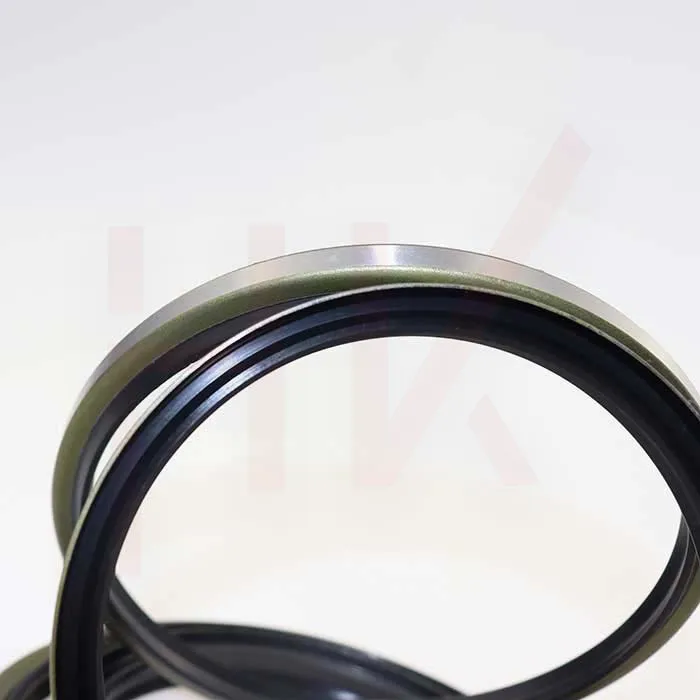Dec . 25, 2024 08:14 Back to list
Wiper Rod Seal Maintenance and Replacement Tips for Optimal Performance
Understanding Wiper Rod Seals Function, Importance, and Maintenance
When we think about the components of any hydraulic system—be it in machinery, vehicles, or industrial equipment—many parts often go unnoticed. Among these, the wiper rod seal plays a crucial yet frequently overlooked role. This specialized sealing component helps maintain the integrity and efficiency of hydraulic systems, preventing contamination and ensuring smooth operation.
What is a Wiper Rod Seal?
A wiper rod seal is a type of seal designed to wipe away dirt, dust, and other contaminants from the surface of a rod as it extends or retracts. Positioned at the top of a hydraulic cylinder, the wiper rod seal prevents debris from entering the cylinder, which could otherwise affect the performance and longevity of the hydraulic system.
The Role of Wiper Rod Seals
The primary function of a wiper rod seal is to keep foreign particles out of the hydraulic cylinder. Hydraulic cylinders operate under high pressure, and any contaminants can lead to wear and tear on the internal components, resulting in system failures. By wiping the rod clean as it moves, the wiper rod seal acts as the first line of defense against dirt and grime.
Not only does the wiper rod seal serve to protect the hydraulic system, but it also helps maintain hydraulic fluid’s cleanliness. Clean hydraulic fluid is essential for proper operation, ensuring that the components move smoothly without resistance. This, in turn, enhances the overall efficiency of the hydraulic system, reducing energy consumption and operational costs.
Importance of Proper Sealing
The effectiveness of a wiper rod seal directly affects the performance and life span of hydraulic systems. When seals are worn, damaged, or improperly installed, they can allow contaminants to enter, leading to increased maintenance needs, frequent repairs, and potential system failure. This can lead to costly downtimes in industrial operations or reduced efficiency in vehicle performance.
In addition, a high-quality wiper rod seal can help to extend the life of the hydraulic fluid itself. Contaminated fluid can break down more quickly and require more frequent replacements. By mitigating this issue, businesses can save significantly on both maintenance and replacement costs.
Types of Wiper Rod Seals
Wiper rod seals come in various designs and materials to suit different applications and environmental conditions. Common materials used in manufacturing these seals include polyurethane, rubber, and PTFE (Teflon), each offering distinct advantages in terms of durability and resistance to harsh conditions.
wiper rod seal

- Polyurethane Seals Known for their excellent abrasion resistance, polyurethane seals are suitable for rugged conditions. They are often used in construction machinery and agricultural equipment.
- Rubber Seals These are the most common type of wiper seals and are known for their elasticity and ability to accommodate minor misalignments. However, their durability may be affected by exposure to extreme temperatures and chemicals.
- PTFE Seals PTFE seals offer excellent chemical resistance and low friction, making them suitable for high-performance applications. They have a long life and can work effectively in high-temperature environments.
Maintenance Tips for Wiper Rod Seals
To maximize the efficiency and lifespan of wiper rod seals, regular maintenance is essential. Here are some best practices
1. Regular Inspection Regularly check the seals for signs of wear or damage. Look for cracks, abrasions, or uneven wear patterns that may indicate contamination or misalignment.
2. Pressure Testing Conduct pressure tests to ensure the hydraulic system is functioning correctly. Any drops in pressure may indicate seal failure.
3. Cleanliness Before reassembling any hydraulic components, thoroughly clean both the rod and the surrounding areas to prevent dirt from entering the system.
4. Proper Installation Ensure the wiper rod seal is installed correctly according to manufacturer guidelines. Improper installation can lead to premature failure.
5. Choose the Right Seal Select the appropriate type of wiper rod seal for specific applications and environmental conditions to ensure optimal performance.
Conclusion
Wiper rod seals may be small components in the grand scheme of hydraulic systems, but their role is integral to performance and longevity. By understanding their function, importance, and maintenance, you can ensure that your hydraulic systems operate efficiently, saving time and money in the long run. Investing in quality wiper rod seals and committing to their upkeep can lead to significant benefits, including improved performance and reduced operational costs.
-
TCN Oil Seal Metal Ring Reinforcement for Heavy Machinery
NewsJul.25,2025
-
Rotary Lip Seal Spring-Loaded Design for High-Speed Applications
NewsJul.25,2025
-
Hydraulic Cylinder Seals Polyurethane Material for High-Impact Jobs
NewsJul.25,2025
-
High Pressure Oil Seal Polyurethane Coating Wear Resistance
NewsJul.25,2025
-
Dust Proof Seal Double Lip Design for Construction Equipment
NewsJul.25,2025
-
Hub Seal Polyurethane Wear Resistance in Agricultural Vehicles
NewsJul.25,2025
-
The Trans-formative Journey of Wheel Hub Oil Seals
NewsJun.06,2025
Products categories
















